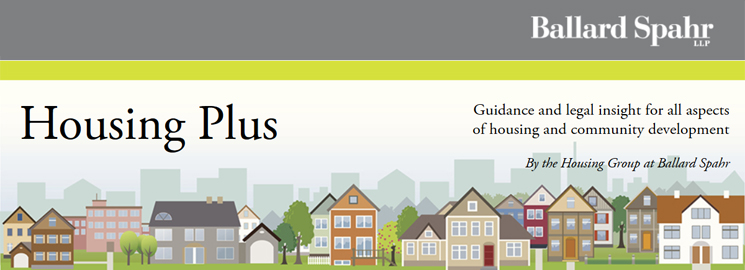
Last week, the U.S. Supreme Court heard oral argument in a case which questioned whether the Fair Housing Act (FHA) allows for a disparate impact theory of liability. The disparate impact theory of liability is one in which a plaintiff shows (usually through statistical analysis) that a protected class was harmed by a policy even if there was no intentional discrimination. Two prior cases raising that issue, Twp. Of Mount Holly v. Mt. Holly Gardens Citizens in Action, Inc. and Magner v. Gallagher, were both settled before oral argument was held in the Supreme Court.
The case, Texas Department of Housing and Community Affairs v. The Inclusive Communities Project, involves a FHA challenge to the allocation of low-income housing tax credits (LIHTCs). The District Court found that the manner in which Texas Department of Housing and Community Affairs (TDHCA) allocated its LIHTCs, while facially neutral, had a disparate impact on persons of color. The District Court found that TDHCA disproportionately approved LIHTCs for non-elderly affordable housing developments in predominantly minority neighborhoods while it disproportionately denied tax credits for the similar affordable housing developments in predominantly white neighborhoods. After a bench trial, the district court determined that a disparate impact on minorities had in fact existed based on plaintiff’s statistics. The court also concluded that the TDHCA had a legitimate interest in its review process but failed to produce any evidence that there were no less-discriminatory alternatives.
On appeal, the Fifth Circuit adopted the burden-shifting approach found in HUD’s disparate impact rule adopted in February 2013 that formalized HUD’s use of disparate impact liability under the FHA. As the District Court had not used HUD’s approach, the case was remanded for such consideration. Meanwhile, the Supreme Court agreed to hear TDHCA’s appeal and consider the question of whether a disparate impact claim is even cognizable under the FHA.
During oral arguments, TDHCA asserted that the plain text of the FHA, when read in conjunction with Court precedent finding disparate impact under other statutes, does not allow for disparate impact; only intentional discrimination is prohibited by the FHA. Its brief quoted President Reagan on this point. President Reagan, in signing 1988 FHA amendments, indicated: “I want to emphasize that this bill does not represent any congressional or executive branch endorsement of the notion, expressed in some judicial opinions, that [FHA] title 8 violations may be established by a showing of disparate impact or discriminatory effects of a practice that is taken without discriminatory intent. Title 8 speaks only to intentional discrimination.”
TDHCA also argued that disparate impact liability would force prohibited race-based (rather than race-neutral) considerations. Inclusive Communities’ counsel argued, to the contrary, that the FHA does allow for disparate impact liability because Congress intended to undo the history of racial segregation and ghettos and that remedies to discriminatory practices need not use racial criteria. Finally, the U.S. Solicitor General argued that deference should be given to HUD’s interpretation of the FHA, both in the 2013 rule and in prior HUD adjudications, because the interpretation was a permissible one.
After watching oral argument, it is clear that the Court could go either way on this case. Predictably, the four liberal justices on the Court asked questions suggesting their support for disparate impact theory under the FHA. Justice Breyer, for example, asked, “[I]t’s been the law for 40 years…, disaster has not occurred, and why when something is so well established throughout the United States should this Court come in and change it?” The liberal justices also tried to distinguish between a finding that disparate impact liability exists, and concerns about the application of HUD’s rule, the latter of which was not to be considered by the Court. Also, predictably, most of the more conservative members of the Court asked questions that suggested doubt about Inclusive Communities’ interpretation of the FHA. Justice Roberts also repeatedly questioned whether one could “avoid a disparate-impact consequence without taking race into account in carrying out the governmental activity.”
Somewhat of a surprise, the typically conservative Justice Scalia seemed to side with the liberal justices. He grilled TDHCA’s counsel, asserting that when he looks at the FHA, including amendments from 1988, “as a whole,” he finds “it hard to read those two together in any other way than there is such a thing as disparate impact.” He also challenged Inclusive Communities’ counsel, however, noting that counsel should not “equate racial disparity with discrimination” and that counsel was arguing “that racial disparity is enough to make… whatever the policy adopted unlawful.” Although prior Court precedent would support TDHCA’s argument of no disparate impact, Justice Scalia seems to be prepared to accept it but then find it unconstitutional on constitutional avoidance and equal protection grounds. Justice Kennedy’s brief comments suggested a similar concern.
Without question, the decision will be a close vote and may split several ways. The Supreme Court will issue a decision in this case sometime before the end of June 2015